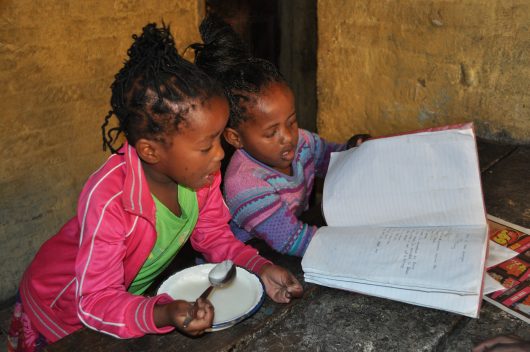World Bank: Investing in Education for Adolescent Girls

One of the U.N.’s Sustainable Development Goals is achieving gender equality, not only because it is right, but because it is proven to help alleviate extreme poverty.
According to the World Bank, “No society can develop sustainably without transforming the distribution of opportunities, resources and choices for males and females so that they have equal power to shape their own lives and contribute to their families, communities,and countries.”
On April 13, 2016, the World Bank announced a $2.5 billion investment to be distributed over the next five years for education projects directly benefiting adolescent girls, ages 12 to 17. The announcement was followed by a statement from First Lady of the Unites States Michelle Obama, urging key policymakers and influencers around the world to support more initiatives geared toward education for adolescent girls.
Empowering and educating women can transform future generations and impact entire countries. The funding will focus on areas in Sub-Saharan Africa and South Asia, which have the highest number of out-of-school girls, equipping them to reach their full potential by having access to quality education.
“The evidence is very clear: when we invest in girls’ education, and we embrace women in our workforce, that doesn’t just benefit them, it benefits all of us,” said Michelle Obama at the Let Girls Learn event during the World Bank Group’s Spring Meetings.
Factors that make women vulnerable to extreme poverty include being subjected to unpaid work, having fewer assets and resources than men, being exposed to gender-based violence and being forced into early marriage.
According to the USAID, although some level of gender inequality exists in all areas of the world, the disparity is especially pronounced in developing countries. Countries with above-average gender inequality correlate with higher extreme poverty rates. Because of this, female empowerment is a core development objective recognized universally.
“When women’s productivity in areas such as agriculture increases, the benefits are amplified across families and generations,” said the USAID in their discussion series about gender and extreme poverty. “Evidence from a range of countries shows that relative to men, women spend more of the income they control in ways that benefit their children, improving nutrition, health and educational opportunities.”
The World Bank’s investment will fund programs that provide adolescent girls with quality education at the secondary level. The investment also includes the provision of scholarships, conditional cash transfers and access to clean drinking water and toilets.
The organization’s commitment to education for girls stems from the statistic that every year of secondary education correlates with an 18 percent increase in a girl’s future earning power.
Funding programs focused on education for adolescent girls is just one aspect of a broader effort by the World Bank to delay child marriage, improve access to reproductive health services as well as strengthen skills and job opportunities for women around the globe.
– Emily Ednoff
Photo: Flickr
